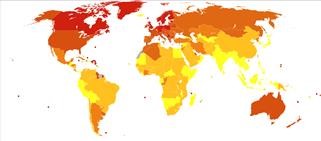The Infertility Org
Infertility Clinic Mount Sinai
We are your source for complete info and resources for Infertility Clinic Mount Sinai on the Internet.
This improves the chances that the embryo will implant at, or attach to, the wall of the uterus. Listen to Mr Brook talk about male infertility Find out more about ICSI. Evaluation of the Female Partner: Evidence of Ovulation (Continued) Progesterone test. This can reveal signs of endometriosis, scarring, blockages, and some irregularities of the uterus and fallopian tubes. Apparently there are only 0,014% of them (this could be an explanation of why they were not discovered until now).
Risk factors for the formation of antisperm antibodies in men include the breakdown of the blood‑testis barrier, trauma and surgery, orchitis, varicocele, infections, prostatitis, testicular cancer, failure of immunosuppression and unprotected receptive anal or oral sex with men.[23][24] Sexually transmitted infections[edit] Infections with the following sexually transmitted pathogens have a negative effect on fertility: Chlamydia trachomatis and Neisseria gonorrhoeae. If natural selection is the primary error correction mechanism that prevents random mutations on the Y chromosome, then fertility treatments for men with abnormal sperm (in particular ICSI) only defer the underlying problem to the next male generation. Infertility and Impaired Fecundity in the United States, 1982-2010: Data from the National Survey of Family Growth. Affected individuals displayed more severe forms of infertility such as azoospermia and severe oligozoospermia.[27] Other causes[edit] Factors that can cause male as well as female infertility are: DNA damage DNA damage reduces fertility in female ovocytes, as caused by smoking,[28] other xenobiotic DNA damaging agents (such as radiation or chemotherapy)[29] or accumulation of the oxidative DNA damage 8-hydroxy-deoxyguanosine[30] DNA damage reduces fertility in male sperm, as caused by oxidative DNA damage,[31] smoking,[28] other xenobiotic DNA damaging agents (such as drugs or chemotherapy)[32] or other DNA damaging agents including reactive oxygen species, fever or high testicular temperature.[33] The damaged DNA related to infertility manifests itself by the increased susceptibility to denaturation inducible by heat or acid [34] or by the presence of double-strand breaks that can be detected by the TUNEL assay.[35] General factors Diabetes mellitus,[36][37] thyroid disorders,[38] undiagnosed and untreated coeliac disease,[39][40][41][42] adrenal disease[43] Hypothalamic-pituitary factors Hyperprolactinemia Hypopituitarism The presence of anti-thyroid antibodies is associated with an increased risk of unexplained subfertility with an odds ratio of 1. While it may be difficult to detect infertility symptoms outright, here are some signs that may point to fertility issues: Irregular periods: The average woman’s cycle is about 28 days long.
Here are Some Even more Info on Infertility Antibodies Testing

Right here are Some Even more Information on Infertility Caused by Depression
Infertility and impaired fecundity in the United States, 1982–2010: data from the National Survey of Family Growth. Chromosomal defects Hereditary disorders, such as Klinefelter’s syndrome (when a male is born with two X chromosomes and one Y chromosome instead of one X and one Y) impacts the normal development of the male reproductive organs.
Here are Some Even more Details on Infertility Clinic Mount Sinai
Chronic conditions: These include AIDS or cancer. Absence of the main sperm pipeline known as the vas deferens.
Below are Some Even more Resources on Infertility Caused by Depression
To examine the sperm motility in the cervical mucus, the postcoital test is made. Sterility is an emotional journey for the couple trying to become pregnant, and feelings of anger, guilt, and depression are not uncommon. World Health Organization[edit] The World Health Organization defines infertility as follows:[10] United States[edit] One definition of infertility that is frequently used in the United States by reproductive endocrinologists, doctors who specialize in infertility, to consider a couple eligible for treatment is: a woman under 35 has not conceived after 12 months of contraceptive-free intercourse. The best candidates for tubal reanastomosis are patients who had tubal ligation by the method of fallopian ring, Filshie clip, or Pomeroy. [144] The pregnancy rate following a tubal reanastomosis performed by a skilled surgeon fluctuates from 70-80%. Contents Definition[edit] "Demographers tend to define infertility as childlessness in a population of women of reproductive age," whereas "the epidemiological definition refers to "trying for" or "time to" a pregnancy, generally in a population of women exposed to" a probability of conception.[8] Currently, female fertility normally peaks at age 24 and diminishes after 30, with pregnancy occurring rarely after age 50.[9] A female is most fertile within 24 hours of ovulation.[9] Male fertility peaks usually at age 25 and declines after age 40.[9] The time needed to pass (during which the couple tries to conceive) for that couple to be diagnosed with infertility differs between different jurisdictions. The male phenotype proves that androgen was present in utero.
Previous Next
See also
Infertility Philippines Usana
Infertility How to Improve Egg Quality
Infertility Gifts